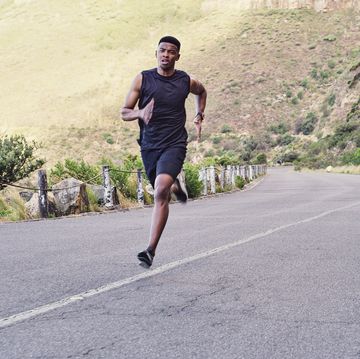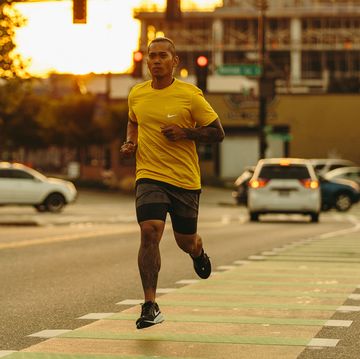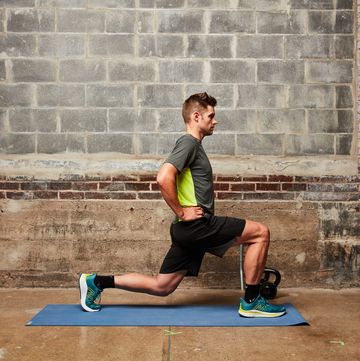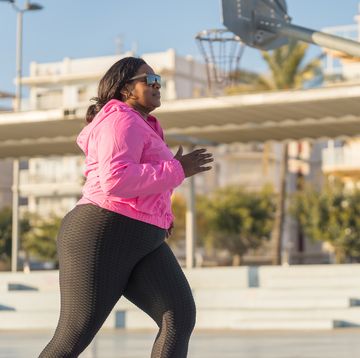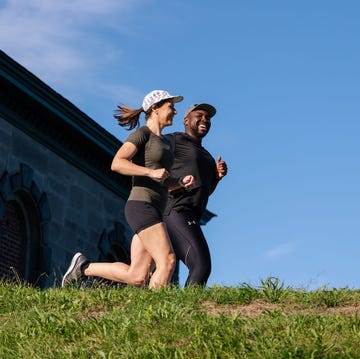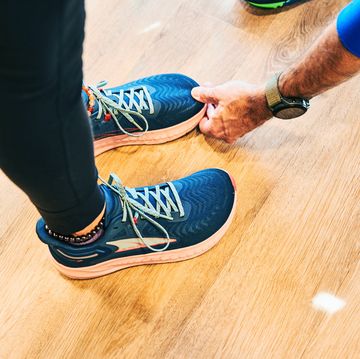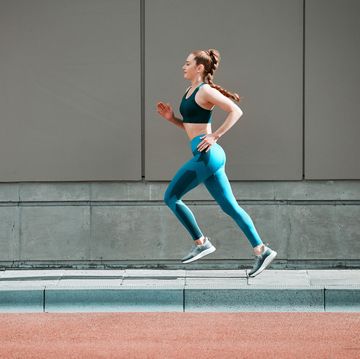How can I get rid of the stitch in my side when I run? It seems to get worse the more times I run and I continue running through it but it never goes away. It starts after the first mile for me. - Sapphire
Sapphire, a side stitch is thought to be a muscle spasm of the diaphragm. Some say it may actually be a spasm of the supporting ligaments, but either way, treatment and prevention are the same. The diaphragm muscle is instrumental in breathing and it can get fatigued like any other muscle. A spasm affects the muscle, supporting ligaments, tendons, and the surrounding connective tissue, known as fascia.
When a side stitch occurs, stop running and take some deep breaths. Then, press your first two fingers in and slightly upward directly where it hurts and hold for about 10 seconds. While pressing in and up, take more deep breaths. You can continue this process of pressing in and up, all around the edge of your ribs up to your sternum.
You can also try stretching to relieve the cramp. Most side stitches are on the right side, so raise your right hand and lean to the left to stretch. Do the opposite if your stitch is on the left side. When the stitch subsides, start walking, then slowly begin running and gradually pick up your pace.
[NOTE: As RW.com's Running Doc has noted in his own blog, side stitches aren't always just side stitches -- read more here, and take special note of the paragraph that begins "A word of caution..."]
To prevent side stitches, avoid eating one to two hours before running, increase your water intake throughout the day, and warm up well before running fast. The dumbbell pullover exercise may help strengthen the diaphragm and prevent side stitches from occurring. (Lie on your back on a weight bench; keep the small of your back flat against the bench. Slowly raise a dumbbell with your arms extended up and over your head. When you feel your lower back begin to rise off the bench, stop. Put your back in contact with the bench and slowly take some deep breaths. Then, bring the dumbbell back to the start position. Repeat this movement several times.)
A massage technique, known as myo-fascial release, may also help prevent stitches. This technique works on the fascia that surrounds muscles and corrects some the binding and constrictions that occur within the fascia. Not all massage therapists practice myo-fascial release, so look for one that specializes in this type of treatment if you decide to pursue this option.
The good news is that side stitches tend to disappear with improved fitness, so don’t give up. Keep running!
Susan Paul, MS
Susan Paul has coached more than 2,000 runners and is an exercise physiologist and program director for the Orlando Track Shack Foundation. For more information, visit www.trackshack.com.
Have a question for our beginners experts? E-mail it to beginners@rodale.com. NOTE: Due to the volume of mail, we regret that we cannot answer every e-mail.

Susan Paul has coached more than 2,000 runners and is an exercise physiologist and program director for the Orlando Track Shack Foundation. For more information, visit www.trackshack.com.




